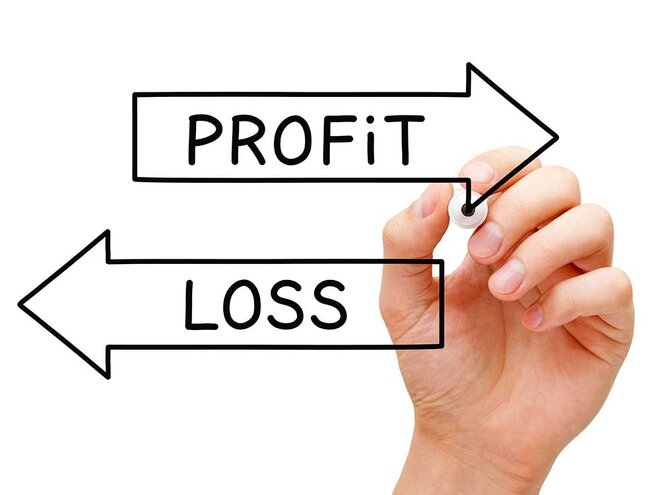
The P&L account (which is officially known as the statement of profit & loss) is arguably the most important financial statement. This is because it provides key financial information about a company's operational metrics, such as sales, expenses and most importantly, the net profit. To get a better understanding of this vital statement, we need to know its nature and format.
What is a P&L statement?
The P&L statement is a very intuitively designed financial statement, which gives its readers information about three important numbers: income, expenses and net profit - which is the difference between the income and expenses.
To illustrate the format, we can look at a simplistic P&L of an imaginary trading company, ABC Limited:
Total income: Rs 100
Total expenditure: Rs 70
Profit: Rs 30
This P&L indicates that the company, ABC Limited, made a profit of Rs 30 by spending Rs 70 for producing goods/services and selling the same for Rs 100. Although this is a simplified version of a P&L statement, the real world P&L statement is very much based on similar principles.
Today's P&L statement begins with the amount of money earned (also called turnover/revenue/income) and moves on to different types of expenditures incurred by the company so that the amount of profit can be finally calculated. Each of these entries is further subdivided so that the readers can have clear, understandable and insightful information about the company's financial affairs.
Other important characteristics
The most crucial characteristic of the P&L statement is that it is based on the accrual system of accounting, which means that transactions are recorded in the time period of their occurrence, no matter when the underlying cash is actually exchanged. This concept is best understood with an illustration. If our imaginary company, ABC Ltd, makes a sale of Rs 50 on March 31, 2021 and receives a cheque dated April 1, 2021, then the sale transaction will still be recorded for the year 2020-21, even though the money would be received only in the year 2021-22. Similarly, if ABC Ltd receives a bill in April 2021 to pay electricity charges for the month of March 2021, then this expense would still be reflected in March, even though the payment was not made in that month.
The advantage of using an accrual-based accounting system is that it ensures that the transactions in the P&L are more reflective of underlying operational realities. But the disadvantage is that it can potentially result in misleading financial statements, with a wide divergence between the profit and cash available. Take for instance a scenario where ABC Ltd regularly sells goods to a large retailer who is facing financial difficulties. Even if the retailer does not make payments, ABC Ltd will continue recognising the income and be profitable on paper, however, in reality, it could be undergoing a severe financial crunch. Many electricity-generating companies (gencoms) suffer a similar fate since distribution companies (discoms) delay payments by months, if not years.
An important aspect of the P&L statement is that it is prepared for a particular time period. And since all listed companies come out with their P&L statements every three months (as per SEBI's regulations), investors must differentiate the quarterly P&L from the annual P&L.
Key takeaways
Despite its drawbacks, the P&L statement is a very important financial statement. But investors need to be aware of its drawbacks in order to better understand a company's financial position. It goes without saying that investors must conduct an in-depth analysis of a company's financial statements before deciding to invest in it. The P&L of every listed company is freely accessible on Value Research Online. Details are available under the 'Financials' tab. For instance, the P&L of Reliance Industries, India's largest company by market capitalisation, can be found here.
Also in this series:








